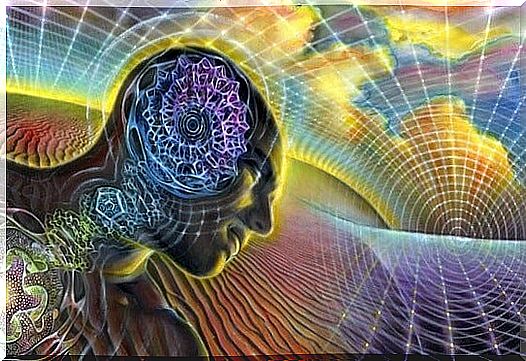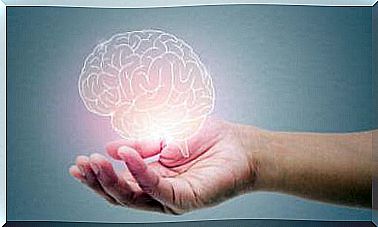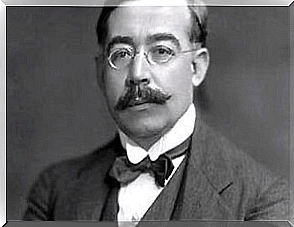Heisenberg’s Uncertainty Principle

Heisenberg’s uncertainty principle tells us that simply observing a subatomic particle, such as an electron, will alter its state. This phenomenon will prevent us from knowing exactly where it is and how it is moving. Likewise, this theory of the quantum universe can also be applied to the macroscopic world to understand how unexpected our reality can be.
It is often said that life would be very boring if we could predict exactly what is going to happen at any given moment. Werner Heisenberg was precisely the first person to demonstrate this to us scientifically. What’s more, thanks to him we learned that everything in the microscopic fabric of quantum particles is intrinsically uncertain. As much or more than in our own reality.
This principle was enunciated in 1925 when Werner Heisenberg was just 24 years old. Eight years after this formulation, this German scientist was awarded the Nobel Prize in Physics. Thanks to his works, modern atomic physics was developed. Now, it can be said that Heisenberg was more than a scientist: his theories contributed, in turn, to the advancement of philosophy.
Hence, its uncertainty principle is also an essential starting point to better understand the social sciences and that area of psychology that also allows us to understand a little more our complex reality …

What is the Heisenberg uncertainty principle?
Heisenberg’s uncertainty principle could be summed up in a philosophical way as follows: in life, as in quantum mechanics, we can never be sure of anything. This scientist’s theory showed us that classical physics was not as predictable as we always believed.
He made us see that at the subatomic level, it is impossible to know at the same moment where a particle is, how it moves and what its speed is. To understand it better we will give an example.
- When we go by car, it is enough to look at the odometer to know how fast we are going. Likewise, we are also clear about our position and our direction while we are driving. We speak in macroscopic terms and without pretending to be very precise.
- Now, in the quantum world this does not happen. Microscopic particles do not have a certain position or a single direction. In fact, they can go to infinite places at the same time. How then can we measure or describe the motion of an electron?
- Heisenberg showed that the most common way to locate an electron in space was to bounce photons off it.
- Now, with this action what was actually achieved was to completely alter that element, with which a precise and accurate observation could never be carried out. It is as if we have to brake the car to measure the speed.
To better understand this idea we can use a simile. The scientist is like a blind person who uses a medicine ball to find out how far away a stool is and what its position is. He is throwing the ball everywhere until it finally hits the object.
But that ball is so strong that what it does is hit the stool and move it. We will be able to measure the distance, however we will no longer really know where the object was.

The observer modifies quantum reality
Heisenberg’s principle in turn shows us an obvious fact: people influence the situation and the speed of small particles. Thus, this German scientist, also inclined to philosophical theories, used to say that matter is neither static nor predictable. Subatomic particles are not “things”, but trends.
Moreover, sometimes, when the scientist is more certain of where an electron is, the more distant it is and the more complex its movement is. The mere fact of proceeding to a measurement already produces change, alteration and chaos in that quantum fabric.
For this reason, and having clear the Heisenberg uncertainty principle and the disturbing influence of the observer, particle accelerators were created. Now, it can be said that at present, studies such as the one carried out by Dr. Aephraim Steinberg of the University of Toronto in Canada, show us new advances. Although the uncertainty principle is still valid (that is, the mere measurement alters the quantum system), very interesting advances are beginning to be made in measurements by controlling polarizations a little better.
The Heisenberg principle, a world full of possibilities
We pointed it out at the beginning. Heisenberg’s principle can be applied to many more contexts beyond quantum physics. After all, uncertainty is the conviction that many of the things around us are not predictable. In other words, they are beyond our control or even more so: we ourselves alter them with our actions.
Thanks to Heisenberg, we put aside classical physics (where everything was under control in a laboratory) to suddenly give way to quantum physics where the observer is creator and viewer at the same time. That is to say, the human being suddenly acts on his context and is able to promote new and fascinating possibilities.

The uncertainty principle and quantum mechanics will never give us a single result before an event. When the scientist observes, multiple possibilities appear before him. Trying to predict something accurately is almost impossible, and that, curiously, is an aspect that Albert Einstein himself objected to. He did not like to think that the Universe was ruled by chance.
However, today many scientists and philosophers remain fascinated with Heinsenberg’s uncertainty principle. Invoking that unpredictable factor of quantum mechanics makes reality less deterministic and us entities freer.









